What to do if the gooseberry dries
Gooseberries are hardy and able to grow in all regions of our country, both wild and cultivated. The shrub is unpretentious and requires minimal gardener intervention. However, if the rules of care are regularly violated or unfavorable weather factors are constantly present, the plant may die.
One of the negative signs is the drying out of the bush. The problem often affects not only the leaves, but also the berries. The plant dries up for several reasons - improper care, unfavorable external factors, infection with diseases and pests. What to do if gooseberry leaves dry - read on.
The content of the article
Reasons for drying gooseberries and its berries
Gooseberry - quite unpretentious plantcapable of withstanding winter frosts, prolonged rains, some mistakes in care.
But when there are too many adverse factors, the condition of the bush worsens... Its leaves and shoots turn yellow, begin to curl, wither and fall off. The berries begin to fall from the bush. And in order to save the plant, it is important to understand the reasons in a timely manner.
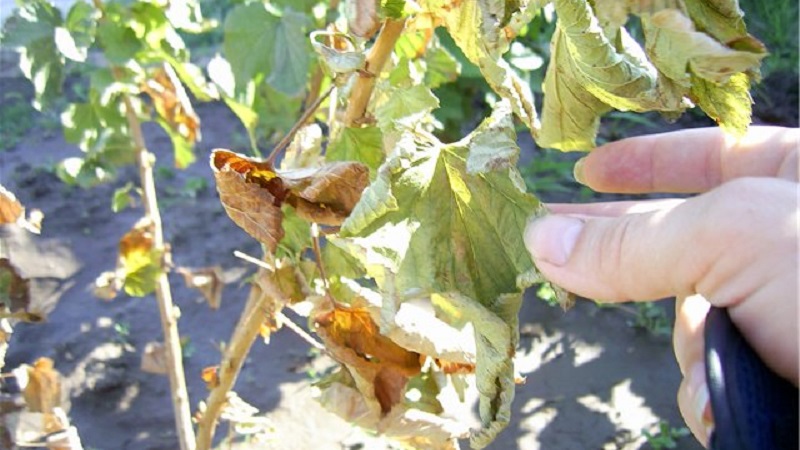
Why berries wither and gooseberry branches dry:
- Lack of lighting... For proper development and ripening of berries, the plant must be in a well-lit part of the garden. If the bush is shaded, photosynthesis deteriorates, because of this, the leaves will dry out and fall off. Too dense crown, which prevents the penetration of sunlight, leads to a similar problem. Another factor that creates shading is a thicker fit.
- Drafts... Despite the fact that the gooseberry is a frost-resistant culture, it begins to shed its leaves in a draft. To prevent this from happening, it is planted in an area protected from the wind.
- Heavy ground... Gooseberries love loose, nutritious soil, through which air easily flows to the roots. Clayy heavy soils are mixed with sand.
- Stagnant fluid... Waterlogging causes root rot and changes in the composition of the earth.
- It happens in case of violation of watering rules or with a close location of groundwater. To reduce the likelihood of moisture stagnation, drainage is poured into the bottom of the hole during planting.
- Lack of nutrients... If a plant lacks fertilizer, it will certainly shed its leaves. This happens especially often during fruiting, when most of the nutrients go into the berries. If the gooseberry lacks iron, chlorosis develops, in which the leaves turn yellow, and the unripe fruits fall off.
- Winter frosts... Despite the frost resistance of gooseberries in severe frosts, without a snow cover, its shoots will freeze. In this case, in the spring they begin to dry out.
- Scorching sun... The problem also arises on very hot days, especially in windy weather - the leaves get burned.
- Diseases and pests... When the gooseberry is affected by a number of infections and pests, a symptom such as drying out of the bush occurs.
How to care to save a plant
To save a plant, you need to understand why gooseberries dry up.... After identifying destructive factors, they are eliminated.
The list includes rules to help avoid shrub drying out and save it:
- Landing... They prevent the problem even at the stage of planting seedlings. For the plant, choose a sunny, wind-protected place. The soil and planting material are disinfected, for example, with a pink solution of potassium permanganate. Fertilizers are poured into the hole.The distance between bushes should not be less than a meter. If the gooseberry dries up and turns yellow due to a mistake made during planting (thickened planting, shaded or windy area), the bush is either transplanted or negative factors are eliminated, for example, the plants that create shade are removed, a structure is installed that will protect from the wind.
- Watering... If the summer is dry, then the gooseberry is watered weekly, if it is rainy, then the plant is not watered. After each watering, the soil is loosened. Drainage poured into the bottom of the hole will help to avoid liquid stagnation. If the problem has arisen due to lack of watering, the plant is watered by adding Epin or Kornevin to the solution. If the soil is waterlogged, then watering is stopped until the soil dries out. Then the bush is watered with a solution of copper sulphate or "Fitosporin", then "Kornevin" is used. In hot summer, the ground part of the bush is sprayed with water at room temperature.
- Weeding... Weeds carry diseases and pests. The area around the bush is cleared of plants. To slow down their growth, the soil is mulched. A layer of hay, peat, straw or humus will protect the plant not only from weeds, but also from diseases, insects, cold snaps, and liquid stagnation.
- Pruning... Formative and sanitary pruning is carried out regularly. Weak and diseased shoots, branches with damaged bark and parts thickening the crown are removed.
- Top dressing... Three dressings are applied per year: in early spring, in late spring, after flowering. Mineral and organic fertilizers alternate. If the leaves are pale or yellow, use ferrous sulfate.
- Wintering... In winter, the shrub is covered with snow. If there is no snow, then use spunbond.
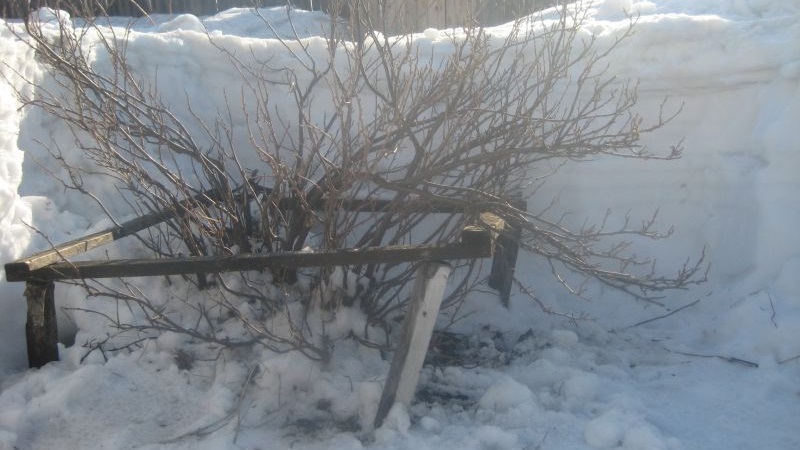
If the plant has been flooded, stopping watering does not always help.... In this case, the bush is dug up, the rotten roots are removed, the remaining root system is treated with a solution of copper sulfate and transplanted to a new place. At first, gooseberries are watered with a solution of a root formation stimulator (Kornevin, Epin) and sprayed with water with a growth stimulant, for example, Energen.
Interesting on the site:
Caring for gooseberries in the fall and preparing shrubs for winter
Diseases and their treatment
On the gooseberry, berries turn yellow and dry together with leaves when infected with certain diseases... To save the plant, it is important to identify the pathogen in a timely manner and begin treatment.
Spheroteka
Spherotheca is a fungus that causes powdery mildew... Despite the fact that many varieties of gooseberries with resistance to the pathogen were bred, it was not possible to defeat the disease until the end. The fact is that even plants with immunity are sometimes affected by this disease.
The fungus is most active in warm and humid environments... The highest risks of infection are with densely crowned shrubs planted close to each other. The pathogen overwinters in fallen leaves and other plant debris.
It is powdery mildew that often causes gooseberries to disappear. The following symptoms give it away:
- Leaves, fruits and tips of shoots are covered with a translucent whitish bloom. At the initial stage, it can be easily erased with your finger.
- Gradually, the spots grow and merge, the plaque becomes denser, then acquires a brown tint. The berries seem to be enveloped in a brown crust, which flakes off in some places.
- The berries become lethargic, the leaves and shoots begin to dry out and then fall off.
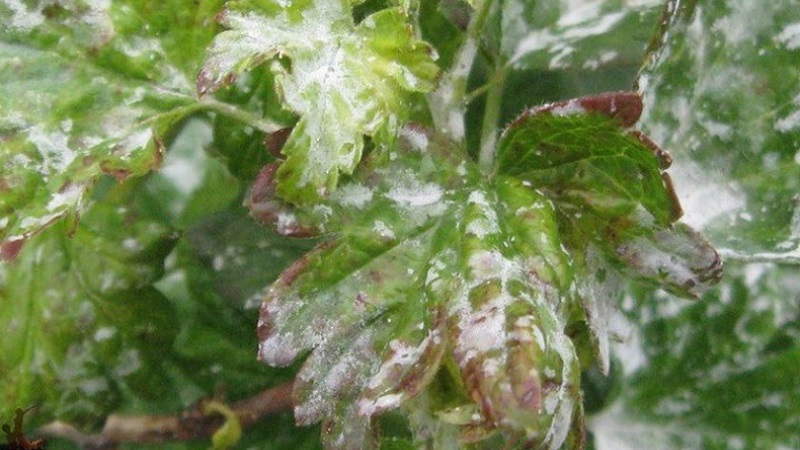
When infected with powdery mildew, photosynthesis is disrupted, the bush begins to dry out, the fallen fruits become unusable. The frost resistance of the plant decreases, and it often dies in the winter.
To save, all affected parts of the bush are cut off. Then his processed by one of the means:
- Fungicides (antifungal agents). They are used if the plant is sick, when the berries have not yet appeared or have already been harvested.One of the effective fungicides is Fundazol.
- Preparations containing copper. For example, copper sulfate. They are used no later than two weeks before harvest.
- Folk remedies. It is the safest method to fight disease. They use different means, one of them is a mixture of milk and iodine (2 liters of milk and 30 drops of iodine are taken in a bucket of water).
Plants are sprayed with drugs... Water the soil around the bush.
Note! An important rule of prevention is the autumn cleaning of fallen leaves from the site. Most pests and diseases hibernate in plant debris.
Anthracnose
Anthracnose is a fungal disease that often develops in July... The fungus is spread around the site by wind and insects. Hibernates in plant debris.
It affects plant leaves. Because of this, they dry out and fall off. Reduces immunity and winter hardiness. Few fruits are produced that do not form correctly. The shoots stop their development.
With anthracnose, the leaves of the plant are covered with brown spots.... They gradually grow and merge. The leaf dries up. In this case, the fungus often does not touch the leaves at the tops of the shoots.
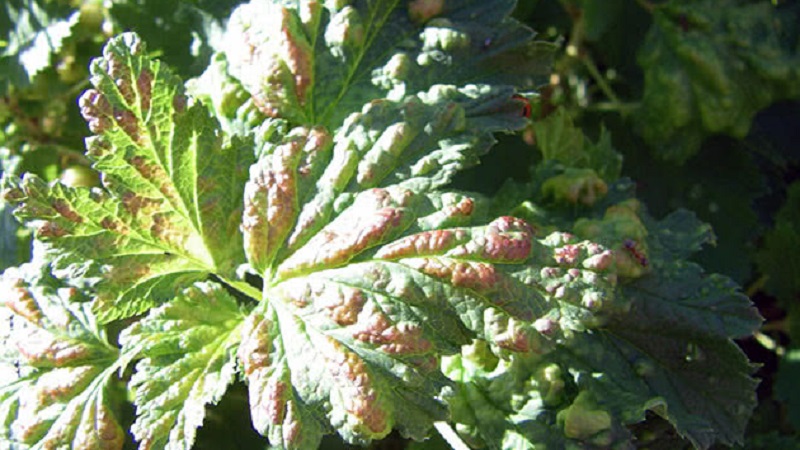
What to do to get rid of the disease? First, all the affected foliage is cut off. Healthy parts of the plant are sprayed with a fungicide or a solution of copper sulfate (1 tablespoon of copper sulfate is dissolved in a bucket of water). Folk remedies are also used, for example, a mixture of one piece of grated laundry soap, 100 g of soda and 10 liters of water.
Advice! It is better to prevent disease than to cure. To do this, in early spring before flowering and in autumn after harvesting, gooseberries are sprayed with Bordeaux liquid.
Rust
Rust - a fungal disease that is transmitted to gooseberries from intermediate hosts... They are conifers, sedge and some other weeds. The fungus is spread over the site by wind and insects.
Rust can be glass and columnar... The list shows the main symptoms:
- With goblet rust, yellow convex formations are formed on the inside of the sheet, and specks on the outside. With columnar rust, red spots are formed only on the outside of the leaf.
- The spots grow and spread to the shoots.
- Red powder begins to pour out of the convex formations. Columnar rust produces rusty filaments that detach from the plant and hang from the bush.
- Leaves and shoots begin to dry and then fall off.
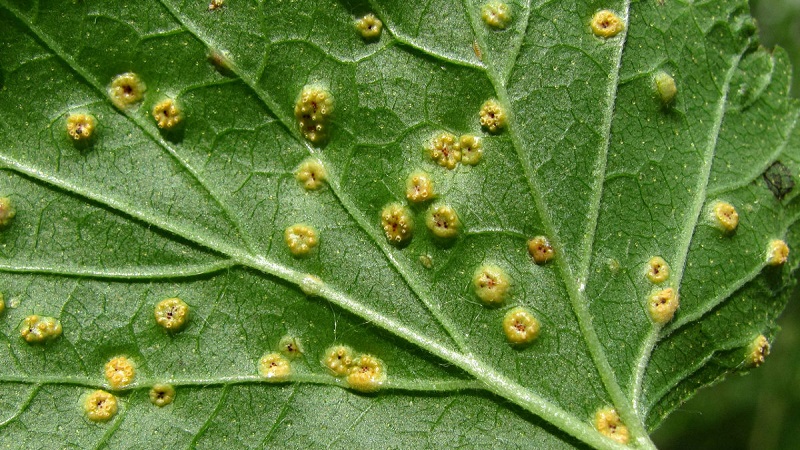
To cope with the disease, all damaged parts are cut off... Then the bush is sprayed with fungicides or preparations with copper. The processing is repeated at least three times.
Note! To avoid contamination of plants with rust, remove the weeds around them. Some weeds become intermediate hosts for the fungus.
Septoriasis
Septoria is another fungal disease... It infects foliage, causing it to dry out and prematurely fall.
At the onset of the disease, small gray spots with a dark outline appear on the leaf plates.... Then dark dots (mature fungal spores) form in them. After that, most of the leaves are covered with spots.
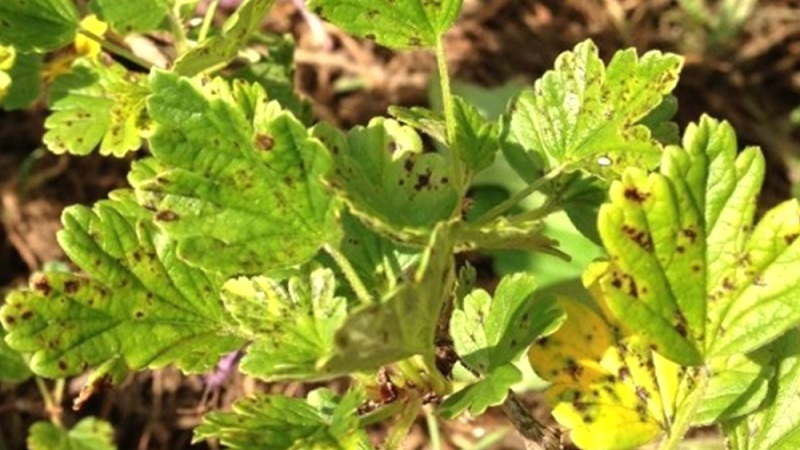
Affected leaf plates dry out first at the edges, and then completely... They curl and fall off.
Treat disease with fungicides, for example, the same "Fundazol". Before this, all affected parts of the plant are cut off.
Alternaria
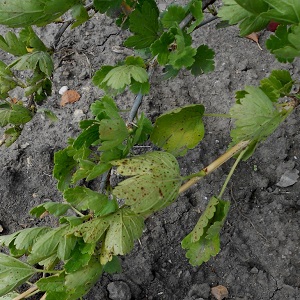 Alternaria or dry spotting also causes gooseberries to dry out.... The causative agent is a fungus.
Alternaria or dry spotting also causes gooseberries to dry out.... The causative agent is a fungus.
When infected, dry gray spots appear on the leaves of the plant.... Over time, they increase in size, their centers crumble and holes form.
Over time, the entire plate turns yellow and dries out... Premature leaf fall is observed.
Fungicides are used to treat the disease.... The most affected parts of the plant are cut off.
Pest control
Some pests can lead to sudden shrinkage of the bush... In addition, they are considered carriers of viral and fungal infections.
Note! In the case of many pests, prevention is more effective than treatment. Preventive measures include: sanitary pruning, autumn cleaning of the site, deep loosening, mulching the soil, pouring boiling water over the bush, treating the plant with insecticides ("Fufanon") before and after flowering.
Gooseberry moth
The gooseberry moth is a butterfly whose caterpillars feed on the berries of the plant.... The larvae have a green body with hairs and a dark brown head.
The caterpillar eats up the pulp and seeds of the fruit, enveloping them in cobwebs... This causes the berries to dry out and fall off.
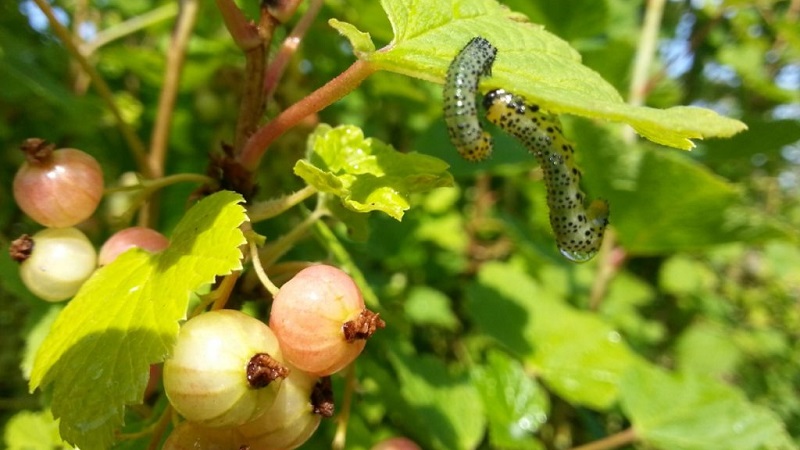
Fight the pest by treating the bushes with insecticides... However, this is not always effective. It is important to follow the rules of prevention, which consist in the autumn harvesting of leaves, the spring scalding of the bush and the soil around it with boiling water and the treatment of the plant before flowering.
Gallica
Gall midge is a small insect. Small white larvae pose a danger to gooseberries... Depending on the species, they attack the buds, shoots or leaves of the plant. When affected by shoot gall midges, swellings are formed on the branches, in which the pest lives.
The plant infected with the pest begins to deform and dry out... The sore parts fall off.
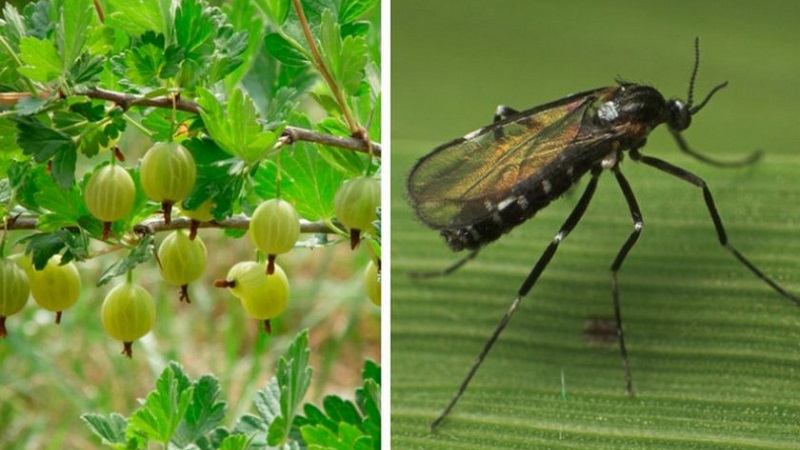
Fight against gall midge with insecticides, for example, "Fufanon" or folk remedies. One of the options for homemade preparations is a decoction of tomato tops (4 kg of fresh chopped greens per 10 liters of water are infused for 3-4 hours, then boiled for 30 minutes, cooled, 1 part is diluted with 4 parts of water).
Currant goldfish
Currant goldfish is dangerous both in the form of an adult insect and in the form of larvae... Narrow green beetles with a metallic sheen and long whiskers gnaw at the edges of the leaves, and their larvae eat up the passages in the shoots. This leads to the drying out of the entire bush.
If you break off the affected branch, then brown powder will fall out of it, which is a product of the larva's vital activity.
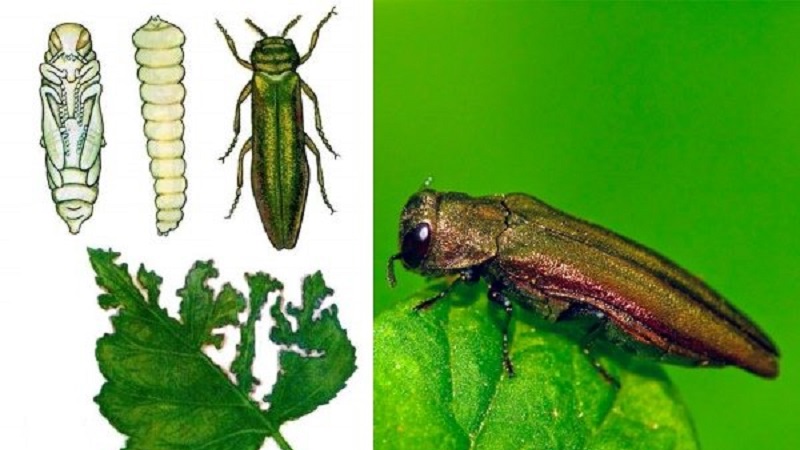
To get rid of the pest, remove all affected shoots... The bush is sprayed with insecticides, for example, "Aktellik" (three weeks after flowering) or infusions, decoctions of bitter herbs (for 1 liter of water, 7 tbsp. L. Dried wormwood - insist half an hour, filter and dilute in a bucket of water). Another way: a dried wormwood broom is placed in the middle of a gooseberry bush - it repels insects.
Spider mite
Spider mite is an insect that feeds on gooseberry juice... This leads to drying of leaves and shoots.
This is a small bug, which, depending on the species, can be black, red, yellow, green, brown, gray. A characteristic feature of a spider mite is the parts of the plant enveloped in cobwebs.
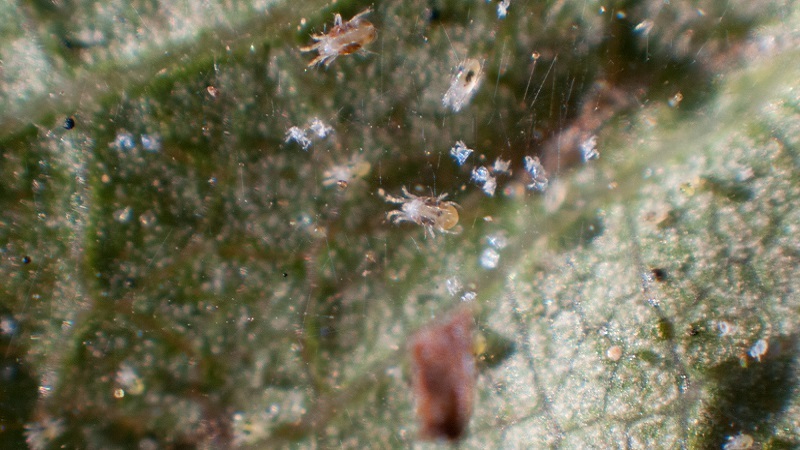
Fight the tick with folk remedies... Before this, the leaves in the web are removed.
Folk remedies against spider mites:
- Pepper with soap... Add 0.5 kg of hot pepper pods twisted in a meat grinder to a bucket of water. The mixture is infused for two days, then a piece of grated laundry soap is added.
- Orange peels... The peels of six oranges are minced in a meat grinder. Insist for three days in a bucket of water. Add 40 g of liquid soap to the infusion.
Aphid
Aphids are another reason gooseberries spoil... It is a small green, brown or black insect that settles on the seamy side of leaves and young shoots of a plant and feeds on sap. Because of this, branches and shoots turn yellow and dry out.
Recognizing a pest is not difficult. If you carefully examine the leaves and shoots, then a large number of small insects will be found on them. with wings and without wings.
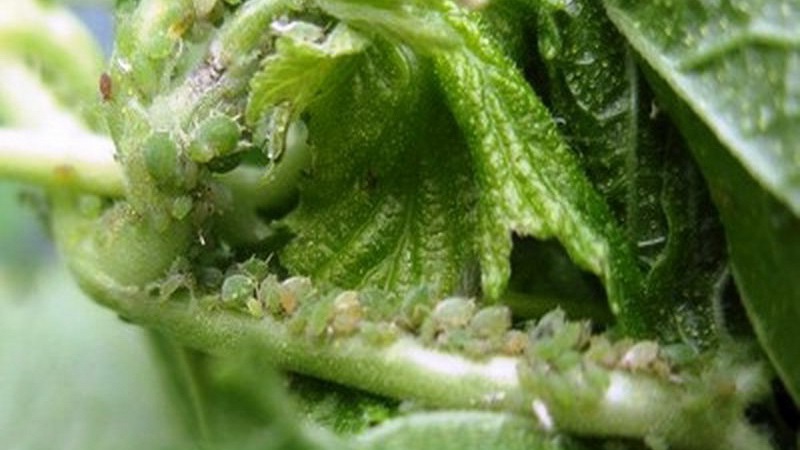
Aphids are easily removed by folk remedies. For this the most affected parts of the plant are cut off, and the rest are sprayed with one of the means:
- Infusion of onions and garlic... 1 kg of onion and 300 g of garlic are chopped in a meat grinder. Vegetable gruel is placed in a bucket along with peelings and poured with water.Insist for three days, then filter and use for spraying.
- Ash soap... A bar of soap and 1 kg of ash are dissolved in a bucket of water. The tool is insisted for a day and used for spraying.
- Broth, infusion of bitter herbs... Wormwood, dandelion, yarrow, etc. will do.
If folk remedies do not help, then use insecticides... For the most part, they are poisonous not only to insects, but also to humans and animals.
Conclusion
If the leaves, berries or shoots of the gooseberry dry out, it needs treatment. This symptom indicates that the plant is on the verge of death. If the problem is not resolved in a timely manner, it simply will not survive the winter.
Various factors can cause the gooseberry bush to dry out: violation of the rules of care, adverse weather conditions. To save the plant, it is examined for infection by insects and infections, the care is reviewed, and then all factors that could lead to the problem are eliminated.